The AMD Ryzen Threadripper 3960X and 3970X Review: 24 and 32 Cores on 7nm
by Dr. Ian Cutress, Andrei Frumusanu & Gavin Bonshor on November 25, 2019 9:05 AM ESTGaming: Grand Theft Auto V
The highly anticipated iteration of the Grand Theft Auto franchise hit the shelves on April 14th 2015, with both AMD and NVIDIA in tow to help optimize the title. GTA doesn’t provide graphical presets, but opens up the options to users and extends the boundaries by pushing even the hardest systems to the limit using Rockstar’s Advanced Game Engine under DirectX 11. Whether the user is flying high in the mountains with long draw distances or dealing with assorted trash in the city, when cranked up to maximum it creates stunning visuals but hard work for both the CPU and the GPU.
For our test we have scripted a version of the in-game benchmark. The in-game benchmark consists of five scenarios: four short panning shots with varying lighting and weather effects, and a fifth action sequence that lasts around 90 seconds. We use only the final part of the benchmark, which combines a flight scene in a jet followed by an inner city drive-by through several intersections followed by ramming a tanker that explodes, causing other cars to explode as well. This is a mix of distance rendering followed by a detailed near-rendering action sequence, and the title thankfully spits out frame time data.
There are no presets for the graphics options on GTA, allowing the user to adjust options such as population density and distance scaling on sliders, but others such as texture/shadow/shader/water quality from Low to Very High. Other options include MSAA, soft shadows, post effects, shadow resolution and extended draw distance options. There is a handy option at the top which shows how much video memory the options are expected to consume, with obvious repercussions if a user requests more video memory than is present on the card (although there’s no obvious indication if you have a low end GPU with lots of GPU memory, like an R7 240 4GB).
All of our benchmark results can also be found in our benchmark engine, Bench.
| AnandTech | IGP | Low | Medium | High |
| Average FPS | 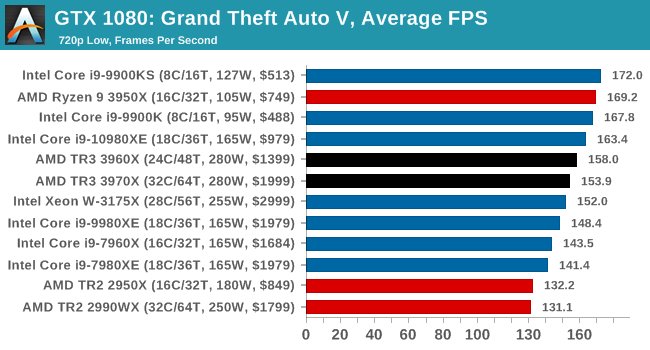 |
 |
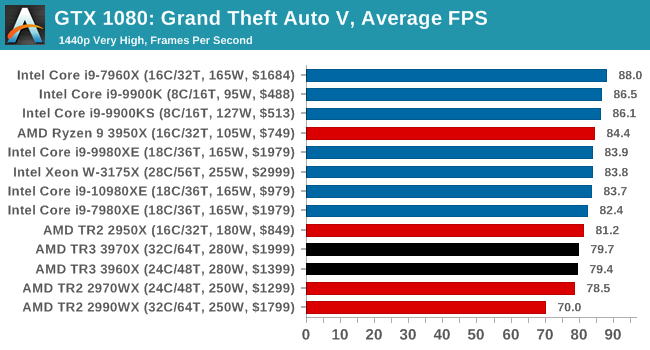 |
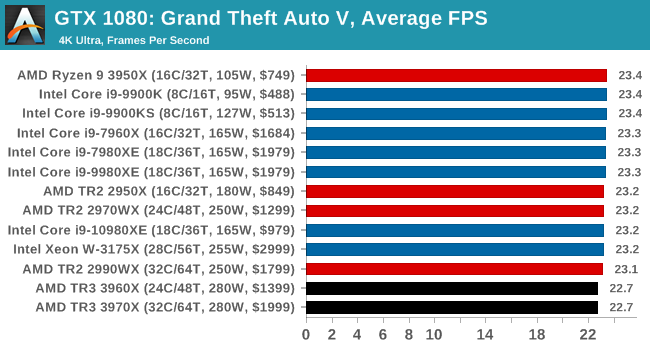 |
| 95th Percentile |  |
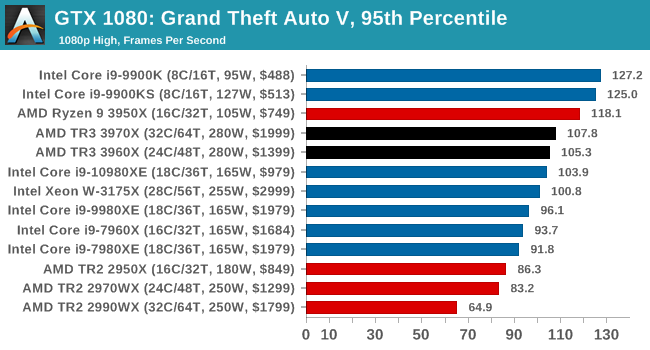 |
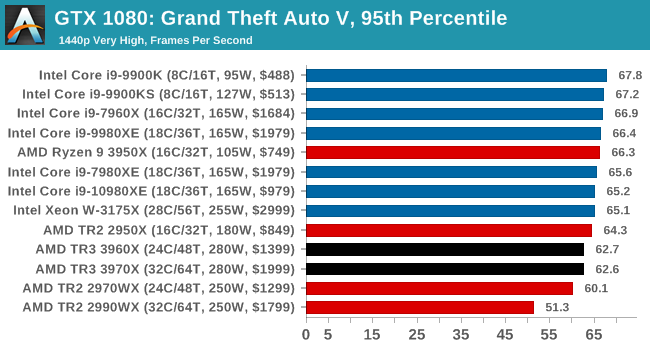 |
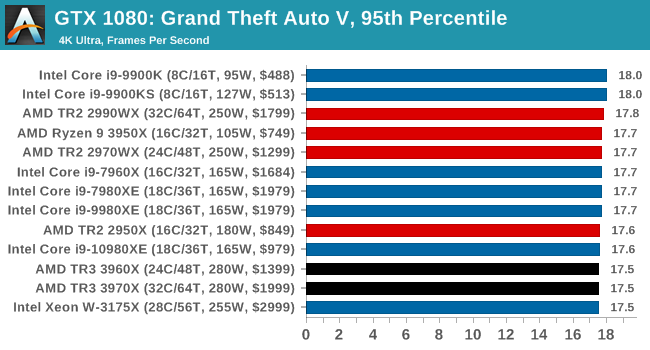 |


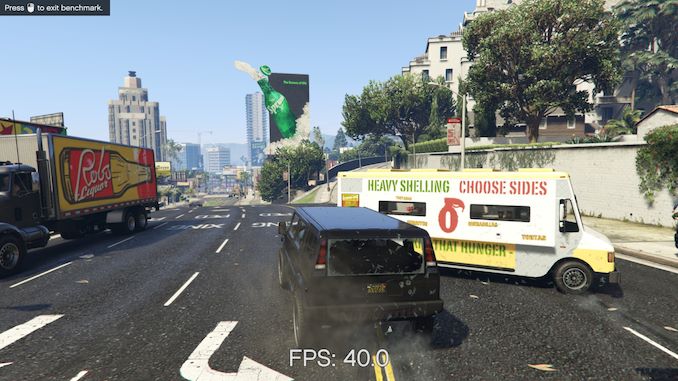









245 Comments
View All Comments
Supercell99 - Tuesday, November 26, 2019 - link
I tend to agree, they can low ball AMD for a few years until the catch up. Assuming they completely screw up the 10 nm deployment going into 2022. It takes 3-5 years for for an industry to fully adopt switch course on a mainstream microprocessor.Korguz - Tuesday, November 26, 2019 - link
" they can low ball AMD for a few years until they catch up " not if their investors and shareholders have anything to say about that......Chaitanya - Monday, November 25, 2019 - link
Impressive to say the least.Paul-RP12 - Monday, November 25, 2019 - link
Intel destroyed. This is the end, this is the sunset of the empireyankeeDDL - Monday, November 25, 2019 - link
I wonder how long will it take Intel to go fabless. Now, that would be a shift ... I think it is inevitable.milkywayer - Monday, November 25, 2019 - link
That's what you get for milking the same s****y 4 core cpus for years until the competition not only catches up but also surpasses you. Intel deserved every bich slap this year from AMD.Paul-RP12 - Monday, November 25, 2019 - link
Intel has no chance. they do not have an effective architecture, they do not have a modern technical process. They are hopelessly behind. 3970x of 2000 usd upside about 20% (in applications that use all the cores) Xeon W-3175X of 3000 usd. Its so crazy!!TEAMSWITCHER - Monday, November 25, 2019 - link
Intel's quarterly profit is still more than AMD's revenue. AMD can't make enough products to change that.eva02langley - Monday, November 25, 2019 - link
I said 10 years last year... so maybe around 9 now.niva - Monday, November 25, 2019 - link
I hope they never go fabless, it will be a big problem for consumers in the end... unfortunately it may happen.